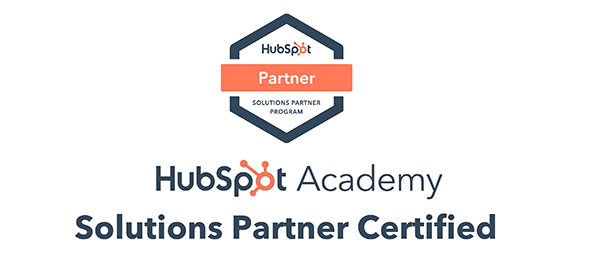4 Visitor Groups Your Website Needs To Be Ready For
![]() by Tom Snyder
on
Jul 19, 2021
by Tom Snyder
on
Jul 19, 2021
Your presence on the web has never been more important to the success of your brand. Unfortunately, your website is now subject to more circumstances, elements and efforts that can damage the brand you have worked so hard to build. And the only thing necessary for every bad thing imaginable to happen to your site is for you to do nothing and think your site is doing fine. So it just boggles my mind that so many marketers and business owners choose to sit back and let failure happen.
Website success has always been about lead generation: who visits your site, how they access it, what they hope to accomplish, and what will or won't happen when they get there. While everyone hopes that website visitors will simply be customers engaging in a business transaction, it's a lot more complicated than that. There are actually 4 other easily identifiable groups of visitors who require strategic efforts.
Because, ready or not, here they come:
1. Hackers, Crackers and Internet Miscreants
Recent stories in both local and national news about data breaches have catapulted brands to the top of public attention. Obviously not the kind of attention you want. PCI-DSS, HIPAA and GDPR compliance are more than suggestions, they are the law. It's amazing how many business and organizations have decided to ignore those standards hoping they won't get caught and penalized by the enforcing bodies. Trivera has even had clients leave us because we insisted on their compliance to security standards. But the bigger fear should be that by ignoring those requirements they'll be more likely to be caught by legions of hackers who are scouring the web every minute of every day, trying to find old and vulnerable installations of Magento, Joomla!, Drupal, Wordpress and Concrete5 and using them to execute mass identity theft.
Unless you have an security compliance plan in place, there's a good chance that someday this traffic will exploit a vulnerability in your site, causing the data breach that will make your business the top story on the 10 O'Clock news. Besides damaging your brand, this activity leads to blacklisting, site shutdowns by hosting providers, and even potential legal consequences, it's not the kind of traffic you want. But if you're not regularly maintaining a security compliance program and keeping your website's CMS/ecommerce platforms upgraded, it's traffic you'll eventually get.
2. Mobile Device Users
Smartphones and tablets are no longer just for "people on the go." For the majority of people, they are the preferred method of accessing the web. If your website doesn't provide your visitors an optimal visual and navigational experience regardless of the device they'e using, you've essentially told over half your potential customers that you're really not interested in their business. And those potential customers are happily taking their business to sites that are mobile friendly.
3. Social Media
Word of mouth has always been one of the most effective forms of marketing. Social Media takes that power to a new level. Does your site have a Resources section with a blog? A newsroom? Videos? Do your pages have Facebook "Like," Twitter "Tweet This," Pinterest "Pin it," Instagram and YouTube icons? A strategic Social Media plan to actually provide the content necessary to make all of those sites create meaningful inbound visitor traffic? Your site needs to be ready for the attention it can get in and from Social Media channels, and the tools that make it easy to do so. Without a solid plan, you'll not only be missing the opportunity to take advantage of the referral power of your visitors' social savvy and their inclination to share your brand with their professional and social networks, but you'll also be protecting yourself from the damage that wil be caused when a negative review or news report about you goes viral.
4. Search Engine Traffic
The sad fact is that unless you've been keeping up with the major changes in the way Google produces results to search queries and making sure your site has been adapting to accommodate those changes, the number of actual, qualified, human customers coming to your site as a result is steadily declining. If you think that Penguin, Panda and Hummingbird are zoo animals, and an algorithm is a catchy tune about a former vice-president, your share of the hundreds of billion searches per month is pretty close to zero, and getting closer every day. Those are the people who aren't coming. But if your site isn't set up to show up on page one with meaningful and accurate search results and instead send unqualified visitors to your site, the ones who do come will leave your site as quickly as they came. Those are called bounces, and the more of those you get, the lower Google will rank you in their searches. Unless you're ready for the indexing spiders who determine your search engine-readiness of your site, you'll never get the meaningful numbers of customers to come to your site.
While there are other elements that will contribute to a successful web strategy (email, direct, and traditional marketing), this list represents the minimum effort necessary to just avoid failure. Now is the time to plan your budget for setting up and executing a strategic plan that systematically optimizes your site to create the right outcome for every one of these groups. Planning ahead will help your web presence reinforce rather than erode your brand, and more importantly, ensure your website contributes to your bottom line.
About Tom Snyder
 Tom Snyder, founder, president and CEO of Trivera, a 25 year old strategic digital marketing firm, with offices in suburban Milwaukee. Tom has been blogging since 1998, sharing the insight gained from helping businesses and organizations reinforce their brands by taking full advantage of digital and Web technology as powerful tactics in their marketing and communications strategy.
Tom Snyder, founder, president and CEO of Trivera, a 25 year old strategic digital marketing firm, with offices in suburban Milwaukee. Tom has been blogging since 1998, sharing the insight gained from helping businesses and organizations reinforce their brands by taking full advantage of digital and Web technology as powerful tactics in their marketing and communications strategy.
Photo Credit: Adobe Stock
Share this article
 Login
Login


